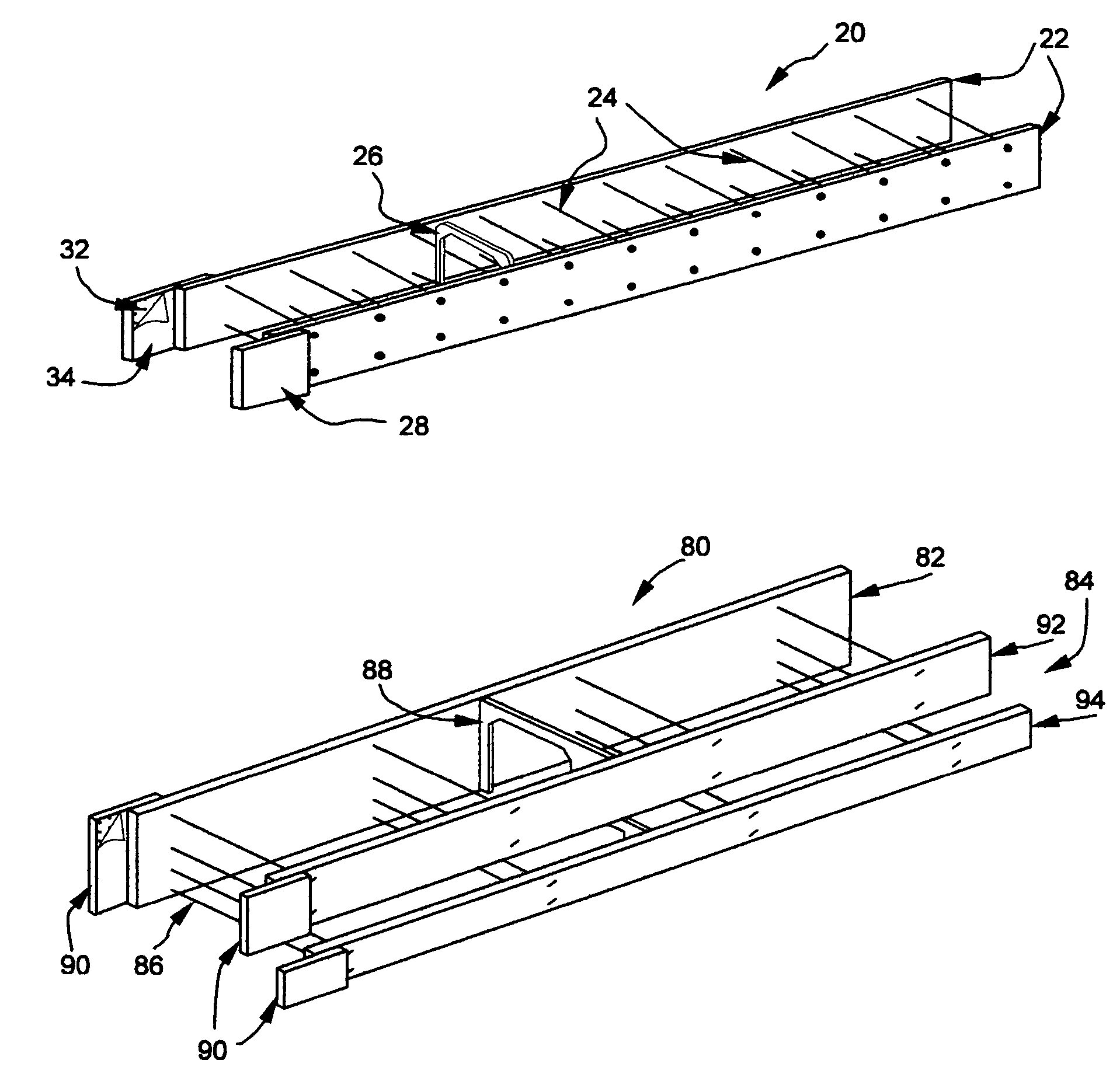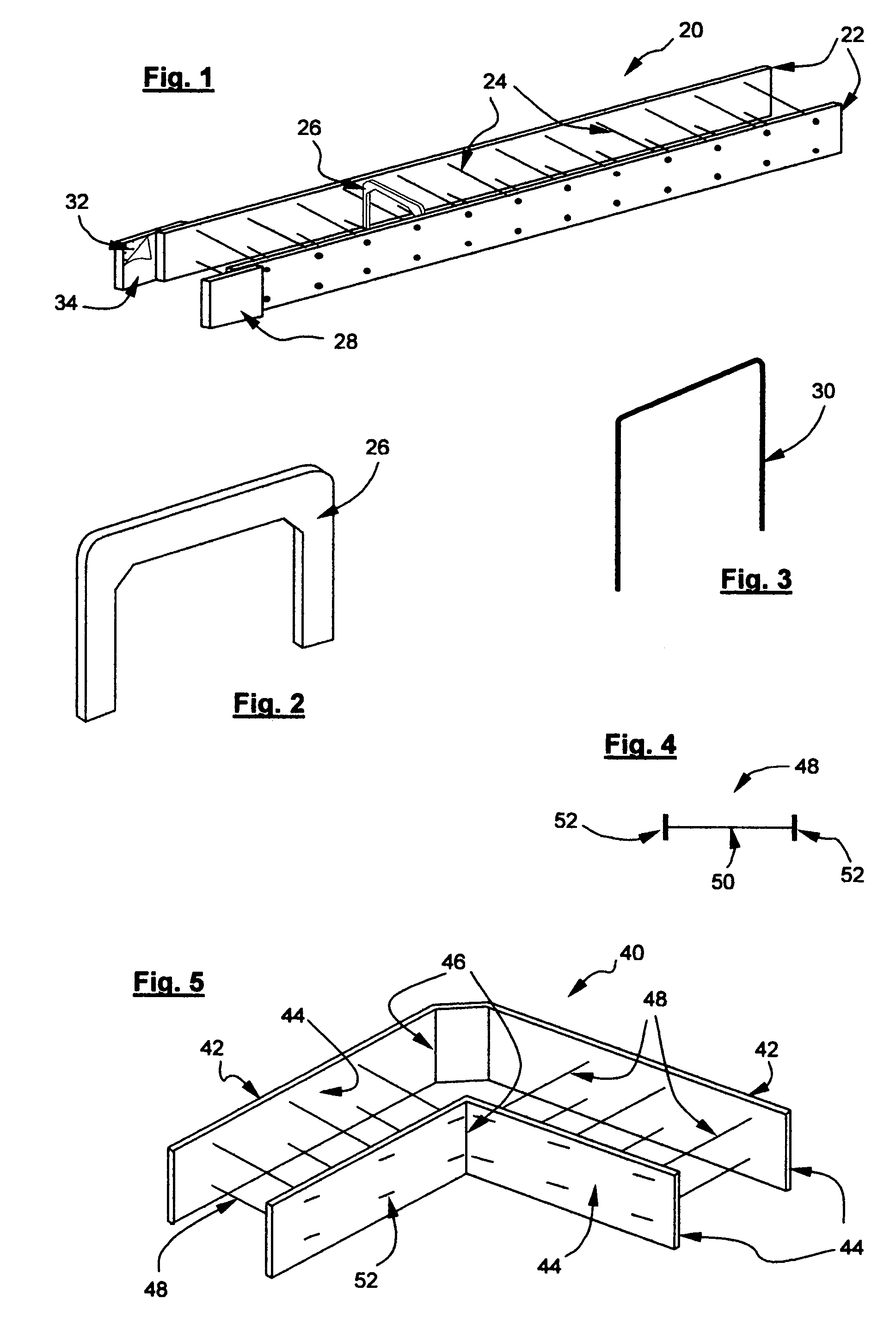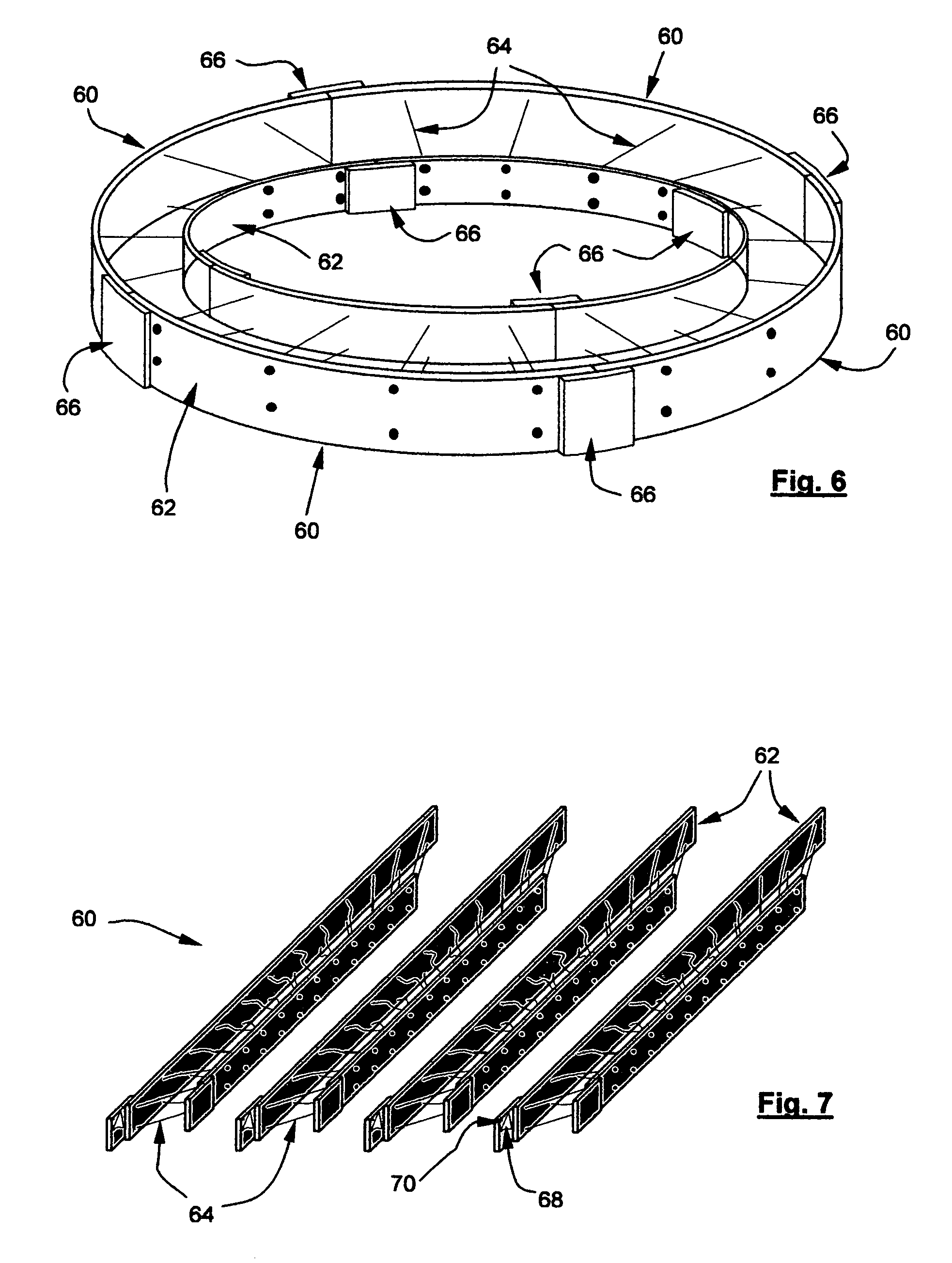Landscape edging form assembly and method
a technology for landscape edging and form assembly, which is applied in the field of concrete landscape edging, can solve the problems of inability to meet the needs of a home handyman, a small contractor, a large contractor, and a small contractor, and achieves the effect of convenient use, easy and quick erection and lay
- Summary
- Abstract
- Description
- Claims
- Application Information
AI Technical Summary
Benefits of technology
Problems solved by technology
Method used
Image
Examples
Embodiment Construction
[0040]FIG. 1 is a schematic perspective view showing a landscape edging form assembly 20 of the subject invention that is designed to form straight lengths of concrete landscape edging in place. The landscape edging form assembly as shown in FIG. 1 is erected and includes first and second sidewalls 22, flexible connector strands 24, one or more spacers 26, and joining extensions 28 for joining the landscape edging form assembly 20 with an adjacent landscape edging form assembly in the fabrication of a landscape edging form made up of a plurality of the landscape edging form assemblies 20. While the landscape edging form assembly 20 is typically about 2 to about 8 inches wide, by about 3 to about 8 inches high, by about 4 to about 10 feet in length, the width, height, and length of the landscape edging form assembly 20 can be selected to best fulfill the requirements of a particular application.
[0041]The first and second sidewalls 22 of the landscape edging form assembly 20 may be ma...
PUM
 Login to View More
Login to View More Abstract
Description
Claims
Application Information
 Login to View More
Login to View More - R&D
- Intellectual Property
- Life Sciences
- Materials
- Tech Scout
- Unparalleled Data Quality
- Higher Quality Content
- 60% Fewer Hallucinations
Browse by: Latest US Patents, China's latest patents, Technical Efficacy Thesaurus, Application Domain, Technology Topic, Popular Technical Reports.
© 2025 PatSnap. All rights reserved.Legal|Privacy policy|Modern Slavery Act Transparency Statement|Sitemap|About US| Contact US: help@patsnap.com



